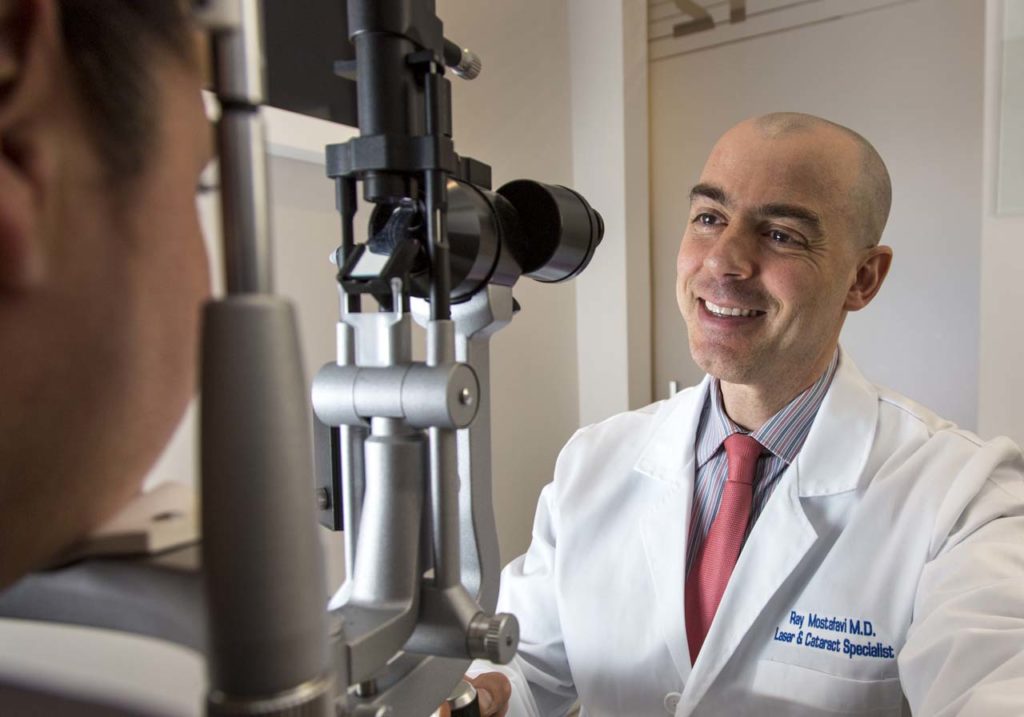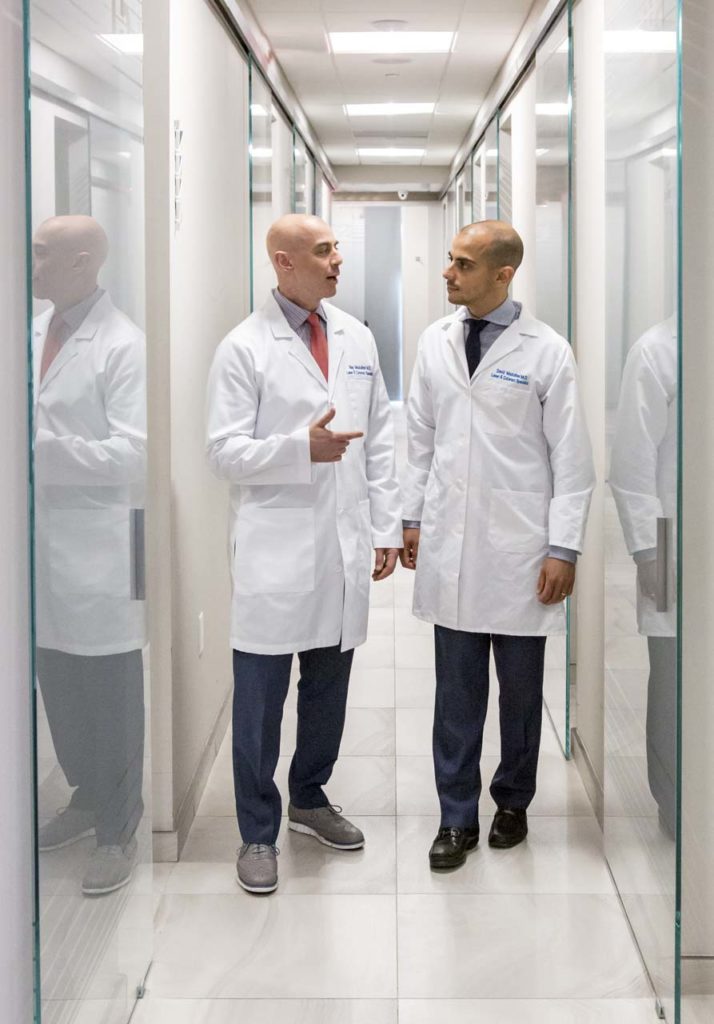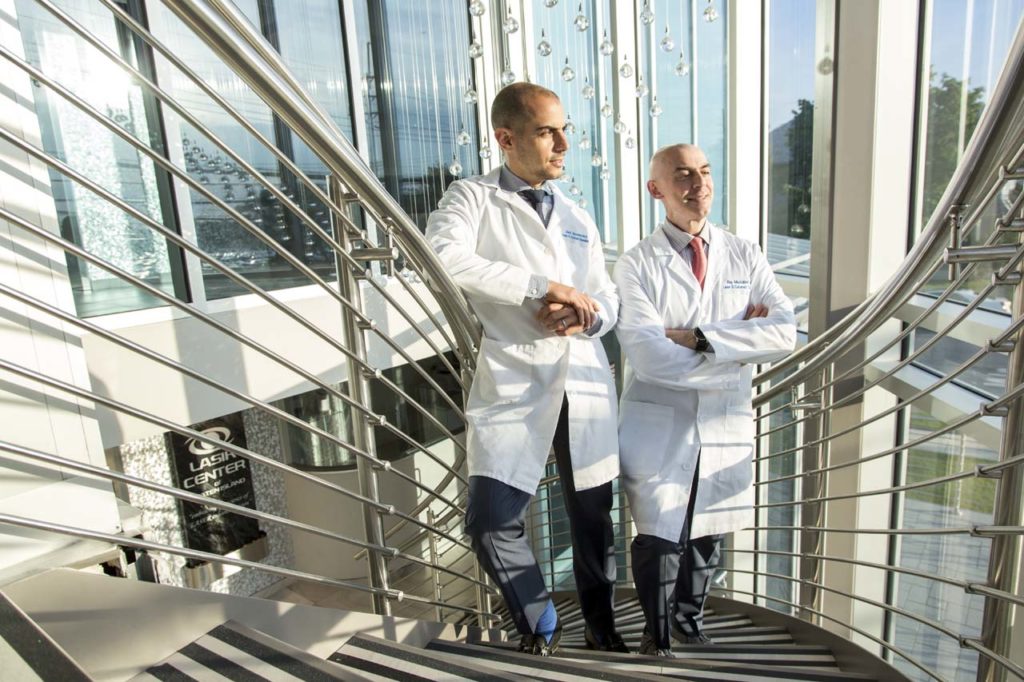HOW THIS BOROUGH BASED TEAM OF OPHTHALMOLOGISTS BROUGHT STATE OF THE ART EYE TREATMENT CLOSER TO HOME
BY TIA KIM • PHOTOS © AMESSÉ PHOTOGRAPHY
After finishing his undergraduate studies at age 18 and medical school at 22, Ray Mostafavi’s rapid progression in the field of ophthalmology has been remarkable. He’s published dozens of articles in books and peer reviewed ophthalmology journals, given numerous lectures at national and international meetings, and become the youngest assistant professor of ophthalmology in the history of the Duke University Eye Center. But one of his proudest accomplishments came in 2013, when he brought the first vision correction laser to Staten Island.

“When this ground breaking Allegretto laser was installed in our office in January of that year, Staten Islanders finally had access to the advanced technology available in most highly acclaimed eye laser centers,” Dr. Mostafavi said of his offices’ expertise with Lasik, a type of reflective surgery for correcting myopia, hyperopia, and astigmatism. “For decades, surgeons would have to travel to Manhattan or New Jersey to perform Lasik, but for close to seven years now, we have brought this procedure closer to home. It was certainly a improvement for Staten Island patients, who no longer have to travel far for this surgery.”
At Mostafavi’s two office locations (in New Dorp and Travis), that type of innovation is the theme. In addition to a focus on Lasik surgery, both offices also house a revolutionary Dry Eye Center, which treats a very common (if under diagnosed) condition, as well as early detection and treatment of Glaucoma, macular degeneration, and diabetic eye disease.
“Our Dry Eye Center uses state of the art testing of tears and a sophisticated, multidisciplinary approach to treat multiple causes of dry eyes with more than just drops,” Mostafavi said. “We see so many patients with dry eye symptoms who for so long are told to manage it with drops. But the days when they were the only option are long over.”
Mostafavi should know. He fulfilled his residency requirements in the department of ophthalmology at Boston University Medical Center and completed his fellowship in cataract and Lasik surgery at Duke. He opened his practice on Staten Island in 2001.
“I chose this field because it’s a very tangible profession you have the ability to make a big difference in someone’s life in a very short period of time,” he said. “After a 10 to 15 minute procedure, a person’s vision is noticeably changed.”

Mostafavi is joined in his practice by his brother, Dr. David Mostafavi, who trained at the New York Eye & Ear Infirmary. His specialty is uveitis, a form of eye inflammation, and he’s an expert on systemic conditions that affect the eye. The two brothers are also among the few surgeons in the city who perform corneal transplantations.
“Aside from Lasik, which corrects vision, we also perform implantation of lenses that correct astigmatism and reading vision,” Mostafavi said. “I was also the first eye surgeon in New York City to implant the revolutionary Symfony lens, which corrects distance and near and astigmatism vision for cataract surgery patients. We also routinely treat glaucoma in patients who are undergoing cataract surgery to the point that many no longer need glaucoma medications after undergoing the procedure.”
Other doctors in their practice include Dr. Rafael Castillo, a retinal specialist in macular degeneration and diabetic eye disease, and Drs. Roman Plishchuck and Inrava Khasnabish. The practice handles more than 100 patients daily, treating a range of vision problems and doing dozens of regular checkups. Still, the majority of patients are seeking cataract surgery and laser treatment.
“Lasik surgery is not for everyone,” said Mostafavi, who has performed hundreds of such surgeries with his Allegretto machine since it was installed six years ago. “I unfortunately have to turn down approximately 10 to 15 percent of those seeking it. I think many people, to a degree, mistakenly believe that Lasik can fix any and all vision problems, but that’s not the case. That said, lasers have become so much more precise in terms of tracking the patient’s eye. There is now a tracker on the laser that measures the eye position over 400 times per second, and so adjusts the laser’s position as many times per second, making the delivery much more accurate.”

The beam of light, he added, remotely locks onto the eye and delivers a precise amount of energy where it needs to go, virtually eliminating inadvertent patient driven errors caused by movement.
“Technological innovations happen so rapidly and help us to deliver such precise treatment,” Mostafavi concluded. “Here in our practice, we are dedicated to bringing the most advanced solutions to our patients. At the Mostafavi Eye Institute, they only receive treatment that is state of the art and cutting edge.”

Lasik Center of Staten Island
445 Clawson Street / 3860 Victory Blvd. / Staten Island, NY / 718.370.2222
lasikcenterofsi.com
